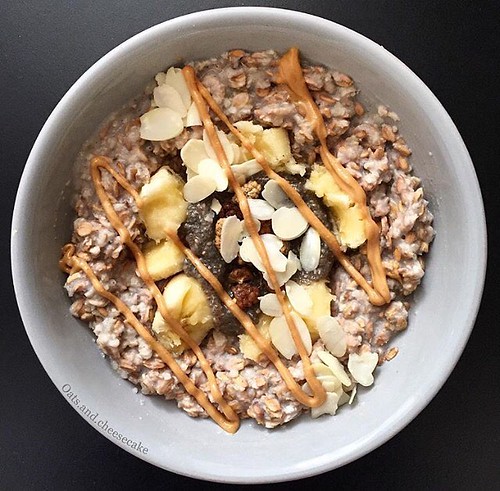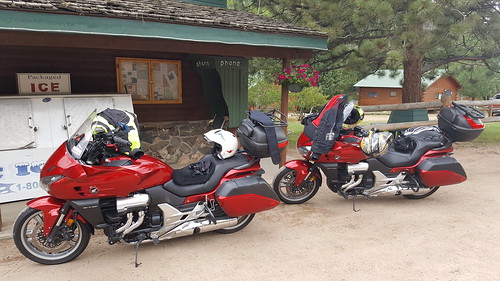Issues [7?], ER whorl formation has been observed upon experimental up-regulation of a variety of membrane-anchored proteins such as cytochrome P450 [22], HMG-CoA reductase [23], microsomal aldehyde dehydrogenase [24], cytochrome b5 [25], the inositol 22948146 1,4,5-triphosphate receptor [26] and the simultaneous over-expression of VapB and its binding partner Nir2 [27]. In each instance, membrane stacking and whorlFigure 1. Both the cytoplasmic and TM domains of Yip1A are required to regulate ER whorl formation. HeLa cells  were co-transfected with Yip1A siRNA and either a negative control myc-Sec61b construct (not shown), a wild-type HA-Yip1A rescue construct (A ), a chimeric construct (HA-Yip1AN/Sec61bTM) with the N-terminus of Yip1A fused to the TM helix of Sec61b (D ), or a Yip1A truncation construct (HA-Yip1A D1?18) lacking the entire cytoplasmic
were co-transfected with Yip1A siRNA and either a negative control myc-Sec61b construct (not shown), a wild-type HA-Yip1A rescue construct (A ), a chimeric construct (HA-Yip1AN/Sec61bTM) with the N-terminus of Yip1A fused to the TM helix of Sec61b (D ), or a Yip1A truncation construct (HA-Yip1A D1?18) lacking the entire cytoplasmic  domain (G ). Cells were fixed 72 h after transfection and co-stained with antibodies against HA (A, D, G) or Myc (not shown) and calnexin (B, E, H). Single asterisks mark cells expressing the indicated construct that did not exhibit ER whorls; whereas double asterisks mark expressing cells that did exhibit ER whorls. Scale bar, 10 mm. The constructs are schematized (C, F, I). (J) The normalized efficiency of rescue by each variant was quantified as detailed in Materials and Methods. Data were from 3 independent 301-00-8 manufacturer experiments (.100 cells per experiment), 6SD. doi:10.1371/journal.pone.0054413.gMutational Analysis of Yip1Aformation seem to be driven largely by self-association of the cytoplasmic domain of the over-expressed ER membraneanchored protein in trans [21]. Whether a similar mechanism underlies ER 10457188 whorl formation after Yip1A loss remains unknown. And if so, the identity of the protein(s) that might undergo trans interactions to bring about ER stacking and whorl formation also remains to be determined. In this study, we wished to gain insight into the molecular mechanism by which Yip1A regulates ER structure. Taking advantage of the ability of a siRNA-immune Yip1A transgene to rescue the whorled ER phenotype in knockdown cells [10], we carried out a systematic mutational analysis of nearly all residues in the protein; our goal being to determine those residues most important for its ER structural maintenance role.C-terminus. The HA-Yip1A D1-83 and D1-118 constructs were created using the PCR-based loop-out technique (Stratagene). All additional HA-Yip1A mutant constructs were created using QuikChange site P7C3 chemical information directed mutagenesis PCR (Stratagene). siRNAs directed against Yif1A were created using a siRNA construction kit (Ambion) and previously published target sequences [13]. The control siRNA used in this study targets bovine p115 and does not affect p115 in HeLa cells [29].Antibodies, immunofluorescence and immunoblottingAntibodies used include mouse monoclonal antibody (mAb) against the HA-epitope (Sigma-Aldrich, St. Louis, MO); a rabbit polyclonal antibody (pAb) against Calnexin, a pAb against tubulin and a mAb against protein disulfide isomerase (PDI) (both Abcam, Cambridge, MA); the 9E10 mAb against the myc epitope [30]; a pAb against GPP130 (kindly provided by Dr. A. Linstedt, Carnegie Mellon University, Pittsburgh, PA). Fluorophore-conjugated secondary antibodies were from Zymed Laboratories (South San Francisco, CA)/Invitrogen (Carlsbad, CA). HeLa cells were typically analyzed 72 h post-transfection. Immunofluorescence procedures were as described previously [10]. Immunoblotting using a mou.Issues [7?], ER whorl formation has been observed upon experimental up-regulation of a variety of membrane-anchored proteins such as cytochrome P450 [22], HMG-CoA reductase [23], microsomal aldehyde dehydrogenase [24], cytochrome b5 [25], the inositol 22948146 1,4,5-triphosphate receptor [26] and the simultaneous over-expression of VapB and its binding partner Nir2 [27]. In each instance, membrane stacking and whorlFigure 1. Both the cytoplasmic and TM domains of Yip1A are required to regulate ER whorl formation. HeLa cells were co-transfected with Yip1A siRNA and either a negative control myc-Sec61b construct (not shown), a wild-type HA-Yip1A rescue construct (A ), a chimeric construct (HA-Yip1AN/Sec61bTM) with the N-terminus of Yip1A fused to the TM helix of Sec61b (D ), or a Yip1A truncation construct (HA-Yip1A D1?18) lacking the entire cytoplasmic domain (G ). Cells were fixed 72 h after transfection and co-stained with antibodies against HA (A, D, G) or Myc (not shown) and calnexin (B, E, H). Single asterisks mark cells expressing the indicated construct that did not exhibit ER whorls; whereas double asterisks mark expressing cells that did exhibit ER whorls. Scale bar, 10 mm. The constructs are schematized (C, F, I). (J) The normalized efficiency of rescue by each variant was quantified as detailed in Materials and Methods. Data were from 3 independent experiments (.100 cells per experiment), 6SD. doi:10.1371/journal.pone.0054413.gMutational Analysis of Yip1Aformation seem to be driven largely by self-association of the cytoplasmic domain of the over-expressed ER membraneanchored protein in trans [21]. Whether a similar mechanism underlies ER 10457188 whorl formation after Yip1A loss remains unknown. And if so, the identity of the protein(s) that might undergo trans interactions to bring about ER stacking and whorl formation also remains to be determined. In this study, we wished to gain insight into the molecular mechanism by which Yip1A regulates ER structure. Taking advantage of the ability of a siRNA-immune Yip1A transgene to rescue the whorled ER phenotype in knockdown cells [10], we carried out a systematic mutational analysis of nearly all residues in the protein; our goal being to determine those residues most important for its ER structural maintenance role.C-terminus. The HA-Yip1A D1-83 and D1-118 constructs were created using the PCR-based loop-out technique (Stratagene). All additional HA-Yip1A mutant constructs were created using QuikChange site directed mutagenesis PCR (Stratagene). siRNAs directed against Yif1A were created using a siRNA construction kit (Ambion) and previously published target sequences [13]. The control siRNA used in this study targets bovine p115 and does not affect p115 in HeLa cells [29].Antibodies, immunofluorescence and immunoblottingAntibodies used include mouse monoclonal antibody (mAb) against the HA-epitope (Sigma-Aldrich, St. Louis, MO); a rabbit polyclonal antibody (pAb) against Calnexin, a pAb against tubulin and a mAb against protein disulfide isomerase (PDI) (both Abcam, Cambridge, MA); the 9E10 mAb against the myc epitope [30]; a pAb against GPP130 (kindly provided by Dr. A. Linstedt, Carnegie Mellon University, Pittsburgh, PA). Fluorophore-conjugated secondary antibodies were from Zymed Laboratories (South San Francisco, CA)/Invitrogen (Carlsbad, CA). HeLa cells were typically analyzed 72 h post-transfection. Immunofluorescence procedures were as described previously [10]. Immunoblotting using a mou.
domain (G ). Cells were fixed 72 h after transfection and co-stained with antibodies against HA (A, D, G) or Myc (not shown) and calnexin (B, E, H). Single asterisks mark cells expressing the indicated construct that did not exhibit ER whorls; whereas double asterisks mark expressing cells that did exhibit ER whorls. Scale bar, 10 mm. The constructs are schematized (C, F, I). (J) The normalized efficiency of rescue by each variant was quantified as detailed in Materials and Methods. Data were from 3 independent 301-00-8 manufacturer experiments (.100 cells per experiment), 6SD. doi:10.1371/journal.pone.0054413.gMutational Analysis of Yip1Aformation seem to be driven largely by self-association of the cytoplasmic domain of the over-expressed ER membraneanchored protein in trans [21]. Whether a similar mechanism underlies ER 10457188 whorl formation after Yip1A loss remains unknown. And if so, the identity of the protein(s) that might undergo trans interactions to bring about ER stacking and whorl formation also remains to be determined. In this study, we wished to gain insight into the molecular mechanism by which Yip1A regulates ER structure. Taking advantage of the ability of a siRNA-immune Yip1A transgene to rescue the whorled ER phenotype in knockdown cells [10], we carried out a systematic mutational analysis of nearly all residues in the protein; our goal being to determine those residues most important for its ER structural maintenance role.C-terminus. The HA-Yip1A D1-83 and D1-118 constructs were created using the PCR-based loop-out technique (Stratagene). All additional HA-Yip1A mutant constructs were created using QuikChange site P7C3 chemical information directed mutagenesis PCR (Stratagene). siRNAs directed against Yif1A were created using a siRNA construction kit (Ambion) and previously published target sequences [13]. The control siRNA used in this study targets bovine p115 and does not affect p115 in HeLa cells [29].Antibodies, immunofluorescence and immunoblottingAntibodies used include mouse monoclonal antibody (mAb) against the HA-epitope (Sigma-Aldrich, St. Louis, MO); a rabbit polyclonal antibody (pAb) against Calnexin, a pAb against tubulin and a mAb against protein disulfide isomerase (PDI) (both Abcam, Cambridge, MA); the 9E10 mAb against the myc epitope [30]; a pAb against GPP130 (kindly provided by Dr. A. Linstedt, Carnegie Mellon University, Pittsburgh, PA). Fluorophore-conjugated secondary antibodies were from Zymed Laboratories (South San Francisco, CA)/Invitrogen (Carlsbad, CA). HeLa cells were typically analyzed 72 h post-transfection. Immunofluorescence procedures were as described previously [10]. Immunoblotting using a mou.Issues [7?], ER whorl formation has been observed upon experimental up-regulation of a variety of membrane-anchored proteins such as cytochrome P450 [22], HMG-CoA reductase [23], microsomal aldehyde dehydrogenase [24], cytochrome b5 [25], the inositol 22948146 1,4,5-triphosphate receptor [26] and the simultaneous over-expression of VapB and its binding partner Nir2 [27]. In each instance, membrane stacking and whorlFigure 1. Both the cytoplasmic and TM domains of Yip1A are required to regulate ER whorl formation. HeLa cells were co-transfected with Yip1A siRNA and either a negative control myc-Sec61b construct (not shown), a wild-type HA-Yip1A rescue construct (A ), a chimeric construct (HA-Yip1AN/Sec61bTM) with the N-terminus of Yip1A fused to the TM helix of Sec61b (D ), or a Yip1A truncation construct (HA-Yip1A D1?18) lacking the entire cytoplasmic domain (G ). Cells were fixed 72 h after transfection and co-stained with antibodies against HA (A, D, G) or Myc (not shown) and calnexin (B, E, H). Single asterisks mark cells expressing the indicated construct that did not exhibit ER whorls; whereas double asterisks mark expressing cells that did exhibit ER whorls. Scale bar, 10 mm. The constructs are schematized (C, F, I). (J) The normalized efficiency of rescue by each variant was quantified as detailed in Materials and Methods. Data were from 3 independent experiments (.100 cells per experiment), 6SD. doi:10.1371/journal.pone.0054413.gMutational Analysis of Yip1Aformation seem to be driven largely by self-association of the cytoplasmic domain of the over-expressed ER membraneanchored protein in trans [21]. Whether a similar mechanism underlies ER 10457188 whorl formation after Yip1A loss remains unknown. And if so, the identity of the protein(s) that might undergo trans interactions to bring about ER stacking and whorl formation also remains to be determined. In this study, we wished to gain insight into the molecular mechanism by which Yip1A regulates ER structure. Taking advantage of the ability of a siRNA-immune Yip1A transgene to rescue the whorled ER phenotype in knockdown cells [10], we carried out a systematic mutational analysis of nearly all residues in the protein; our goal being to determine those residues most important for its ER structural maintenance role.C-terminus. The HA-Yip1A D1-83 and D1-118 constructs were created using the PCR-based loop-out technique (Stratagene). All additional HA-Yip1A mutant constructs were created using QuikChange site directed mutagenesis PCR (Stratagene). siRNAs directed against Yif1A were created using a siRNA construction kit (Ambion) and previously published target sequences [13]. The control siRNA used in this study targets bovine p115 and does not affect p115 in HeLa cells [29].Antibodies, immunofluorescence and immunoblottingAntibodies used include mouse monoclonal antibody (mAb) against the HA-epitope (Sigma-Aldrich, St. Louis, MO); a rabbit polyclonal antibody (pAb) against Calnexin, a pAb against tubulin and a mAb against protein disulfide isomerase (PDI) (both Abcam, Cambridge, MA); the 9E10 mAb against the myc epitope [30]; a pAb against GPP130 (kindly provided by Dr. A. Linstedt, Carnegie Mellon University, Pittsburgh, PA). Fluorophore-conjugated secondary antibodies were from Zymed Laboratories (South San Francisco, CA)/Invitrogen (Carlsbad, CA). HeLa cells were typically analyzed 72 h post-transfection. Immunofluorescence procedures were as described previously [10]. Immunoblotting using a mou.
